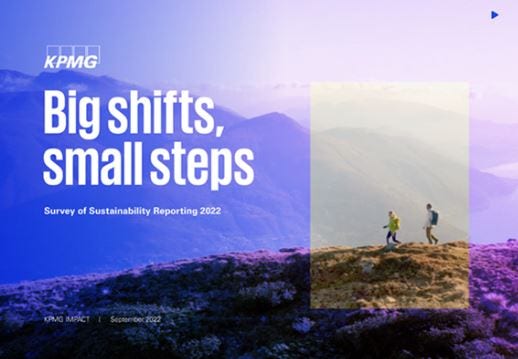Among the N100, reporting of climate change targets has increased by 6 percentage points from 2020 to 71 percent, while the G250 moved up 4 percentage points to 80 percent.
Heavy industries & TMT soar; Healthcare & Financial Services lag
After persistent pressure from stakeholders to disclose their climate targets, resource-intensive sectors have emerged as leaders in this space, with 7 of the top 10 positions within the N100 in 2022 held by these sectors. Leading reporters include automotive (89 percent) and mining (86 percent).
Equally encouraging is the noticeable growth in the technology, media and telecommunications sector, taking top spot in sector disclosure within the G250 (89 percent) and ranks third in the N100 (81 percent).
Although making some gains, the research shows that the healthcare and financial services sectors — in both the N100 and the G250 — continue to show opportunities for improvement, with consistent ranking in the bottom three, as presented in 2017.
Links to external climate targets show promise
Businesses are increasingly recognizing that they have a role to play in helping to achieve global, regional and national climate targets. We see a marked increase in this business practice since 2017 with 71 percent of the N100 and 80 percent of the G250 linking their carbon targets to broader climate goals.
It is reassuring that the majority of companies recognize that they must reduce their own emissions rather than rely solely on carbon credits
Marked increase in TCFD adoption
The survey results show a notable increase among companies in adopting the TCFD recommendations over recent years. Specifically, one-third of the N100 now report using the TCFD recommendations (34 percent) — nearly doubling the 2020 figure, and almost two-thirds of the G250 (61 percent) observe the TCFD — an increase of 24 percent from 2020.
In 2021, the G7 nations agreed to mandate TCFD-aligned climate-related financial reporting. The Task Force stated in 2021 that over 2,600 organizations, across 89 countries, territories and jurisdictions use the recommendations.
Strength in numbers
Although initially targeted at the financial sector, N100 TCFD adoption has seen strong growth across all sectors, particularly among consumer-based sectors and heavy industries in both the N100 and the G250.
TCFD adoption within the N100 is led by the automotive (60 percent), mining (50 percent) and TMT (45 percent) sectors. Still today, just one-third of the financial services sector uses the standard.
When we look at the G250, the financial services sector shows greater participation (70 percent). TMT leads the G250 (75 percent), while the retail sector ranks third (71 percent).
Assurance rates double among Chinese G250 companies but remain steady elsewhere
Independent external assurance of sustainability reporting information enhances the credibility of the reported information. Close to half of the N100 invested in independent third-party assurance. In 2020, the assurance rate decreased among the N100 companies. Following a decline in 2020, the G250 assurance rate increased in 2022, largely driven by trends in China.
Related Content

Jennifer Shulman
Lead Partner Economic Services in Canada, Global Lead ESG Advisory Hub
KPMG International




